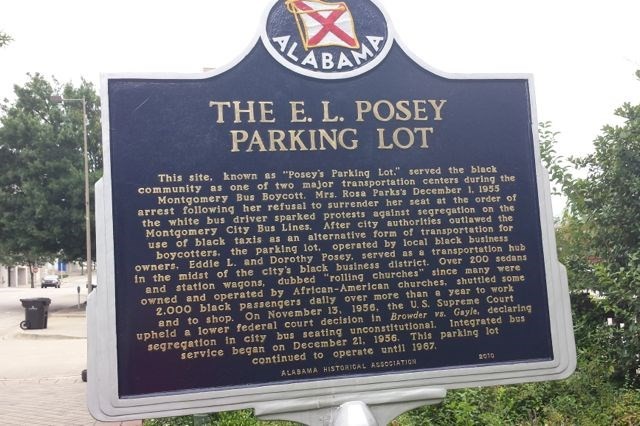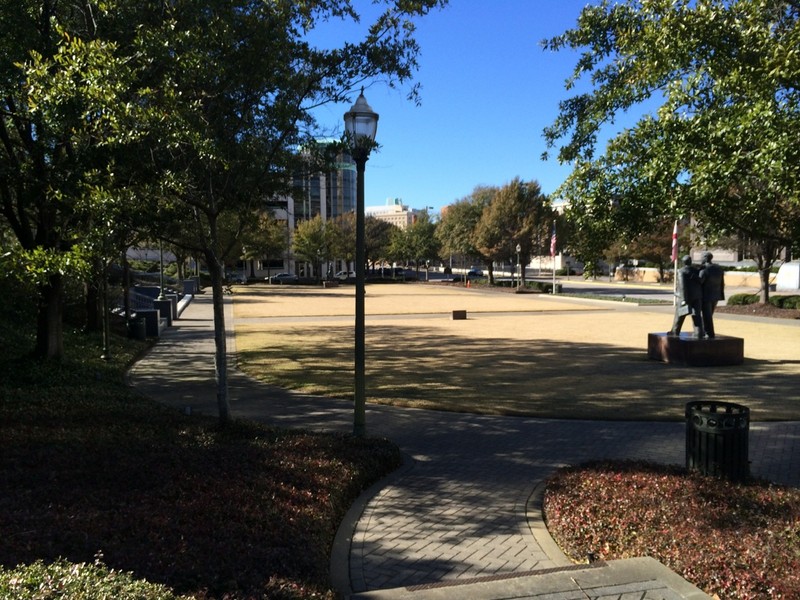Posey's Parking Lot, Staging Ground of the Montgommery Bus Boycott
Introduction
Text-to-speech Audio
Images
The historical marker is located on North McDonough Street about forty feet from the intersection.

The site of the former parking lot is now a small park.

Backstory and Context
Text-to-speech Audio
In response to Rosa Parks’ arrest on December 1, 1955, African American women in Montgomery called for a mass meeting which led to the creation of the Montgomery Improvement Association. The group launched the now-famous Montgomery Bus Boycott and sustained pressure on the city to end segregation by refusing to use city buses for 381 days.
At least half of the city bus riders were African American, so the collective refusal to ride the buses had a great economic impact. This collective action was only possible because of the organization within the African American community. After city authorities went after Black taxi owners, this parking lot became home to an alternative source of transportation led by Black citizens and business owners. The name Posey came from the main operators Eddie L. and Dorothy Posey.
The lot housed over 200 sedans and stations wagons, which came to be called “rolling churches” since many were owned by local Black churches. The parking lot shuttled around 2,000 Black passengers each day for over a year. Integrated bus service began in December of 1956 after the U.S. Supreme Court upheld a lower court decision in Browder v. Gayle, which declared the city’s segregated bus seating unconstitutional. However, the parking lot continued to operate until 1967.
The role that Black businesses, churches, and community leaders played in the organization of the lot underscore not only the power of collective action and organizing but show how Montgomery was home to an active Black community who could mobilize their economic power to force change.
Cite This Entry
Sophia Mills and David J. Trowbridge. "Posey's Parking Lot, Staging Ground of the Montgommery Bus Boycott ." Clio: Your Guide to History. May 8, 2017. Accessed April 5, 2025. https://theclio.com/entry/38010
Sources
The E.L. Posey Parking Lot. HMdb.org. Accessed April 28, 2017. http://www.hmdb.org/marker.asp?marker=71261.
Savage, Beth L. African American Historical Places. National Park Service, Department of Interior.

